Back to School: How to Treat Head Lice
The kids are going back to school, which means back to early mornings and bickering over where their shoes were left. Unfortunately, it also means the return of head lice.
Most common in January when the children return to school, head lice spread through schools due to everyone being close together and the increased socialisation that comes from hundreds of children in one location. But what exactly are head lice, and how do we treat them?
An array of scalp and hair treatments are available through the Travel Health Clinic that can help with various conditions, including dandruff and head lice.
What are head lice?
These are wingless insects that are up to 3mm long, which is approximately the size of a sesame or chia seed. A singular insect is called a head louse, and they feed on human blood from the scalp for between 4 and 6 hours.
They are commonly known as nits, although this term only describes the eggs that the head lice lay. These eggs are usually brown, or white if the eggs are empty, and they are laid near the scalp because it is warmer. However, in the hotter months, the distance between the scalp and head lice eggs can increase.
The eggs are the first stage in the head lice life cycle. The second stage is the nymphs, which are baby head lice. They look similar to the adults but are smaller. They are approximately the same size as the head of a pin. The final stage is the head lice being adults, and at this stage, they can lay more eggs.
Each head louse has the potential to lay between 4 and 5 eggs daily, which is why treating head lice quickly is so important. This will stop them from breeding more than they already have. They are spread through sharing items that come into contact with the head, such as brushes, towels, hair accessories, hats and blow dryers, but can also be spread through direct contact between two heads.
It is a common myth that head lice prefer dirty hair. This is false. A child having head lice does not have anything to do with the cleanliness or hygiene of their hair.
What are the symptoms of head lice?
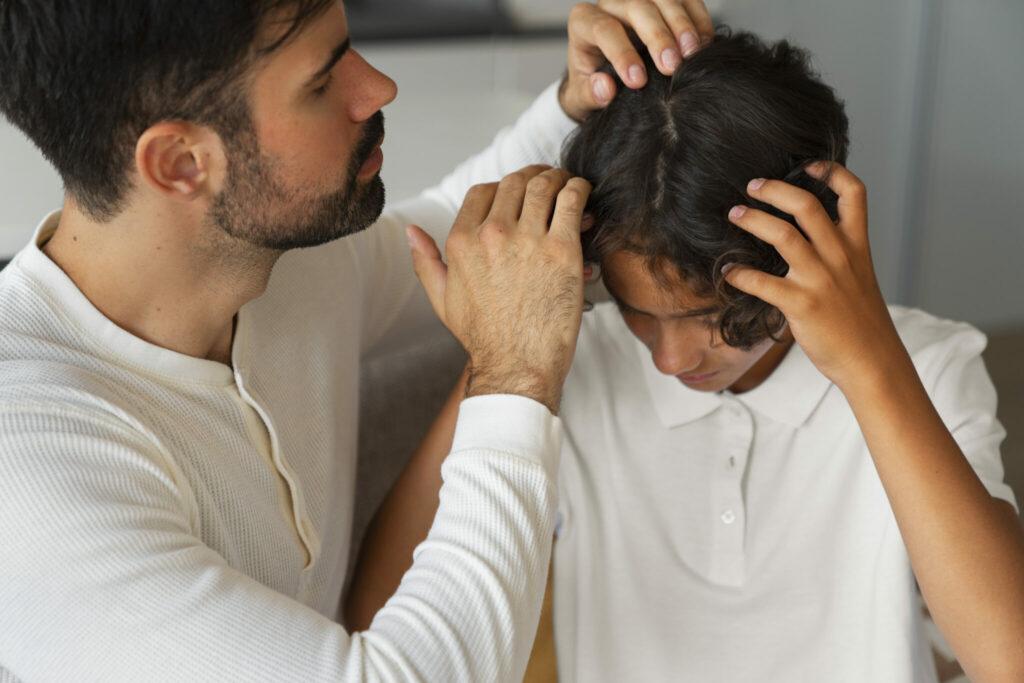
There are a range of head lice symptoms that you can look out for to help your child. Some of them are more obvious than others, and not everyone displays all the symptoms. They include:
– Scratching
– Itching
– Lice on the hair shaft
– Lice on the scalp
– Sores on the neck, shoulders, back and scalp
Head lice are commonly found at the nape of the neck and behind the ears.
If your child is suffering from sores due to head lice, there are treatments you can use. Therapeutic shampoos can help to treat scalps that are scaly and dry, as well as the sores that come from head lice.
How to Treat Head Lice at Home
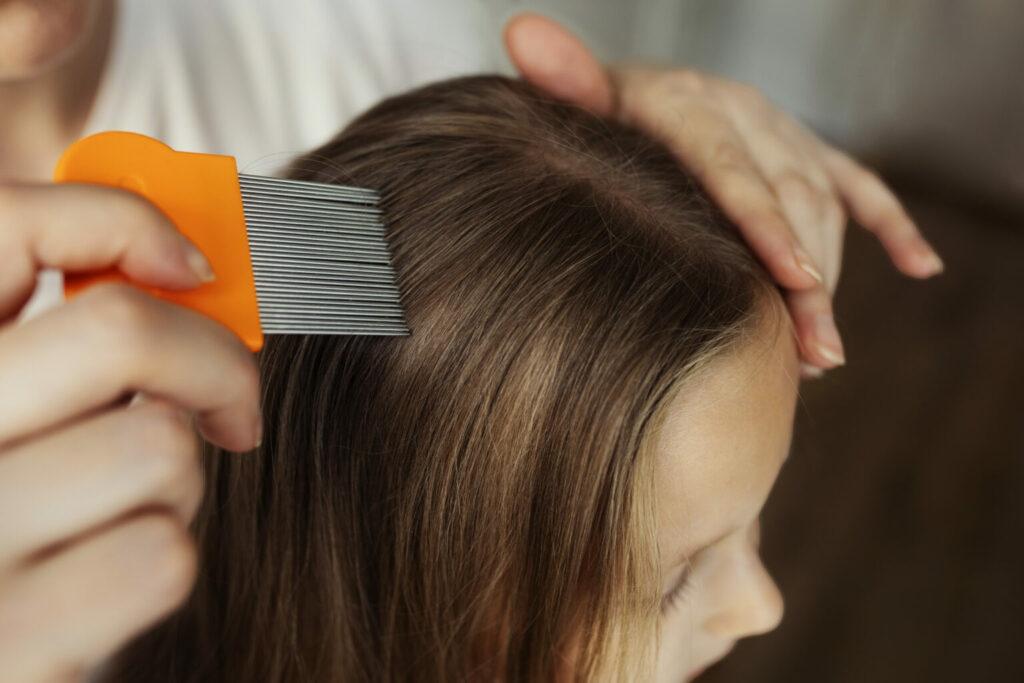
Numerous head lice treatments are available for you to purchase, and some of them claim to be repellants. However, these are not guaranteed to work. Some of the best head lice treatments to use at home include a method called wet combing, as well as lotions, sprays and shampoos. If this is unsuccessful, you can speak with a pharmacist to see what they recommend.
1) Head Lice Combs
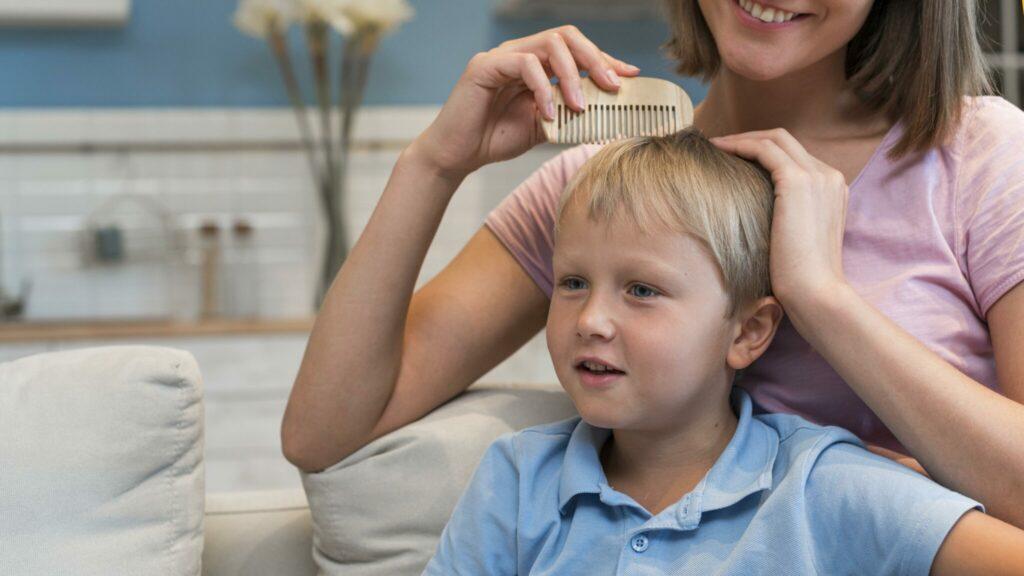
These are designed to help remove head lice and nits from hair because the teeth of the comb are closer together. These combs are the treatment that is recommended first.
Head lice combs are used for the wet combing method, which is where the hair is washed using normal shampoo and a lot of conditioner. Using the head lice comb, you should then go through the hair in sections and remove any nits or head lice that you find. This should be done on day 1, day 5, day 9 and day 13. This will allow you to remove any lice that have hatched since you first started wet combing through your child’s hair.
If wet combing doesn’t work effectively, you can use other treatments. You can speak with a pharmacist to see which products they recommend.
2) Head Lice Mousses
Mousses are another way to treat head lice and work through the application of the product to the hair. For example, Hedrin Treat and Go is designed to be used on dry hair and left in for at least 8 hours before being washed or rinsed out. Apply, wait and rinse again. This should be repeated after 7 days.
Each mousse is different and you should read the information leaflet that accompanies these products before use.
3) Gels

Like mousses, head lice gels can often be applied to dry hair. However, you still need to read the information leaflet before using them to ensure that you use them correctly and therefore effectively.
Hedrin Liquid Gel is designed for easy application and to kill live head lice and their eggs. Simply apply the gel to dry hair evenly and spread it using a normal comb or your fingers. This should leave the gel even between the roots of the hair and the tips, and there should be plenty of gel used. Leave for at least an hour, then wash the gel out using a non-conditioning shampoo. No conditioner is required. Repeat after 7 days.
4) Head Lice Shampoo
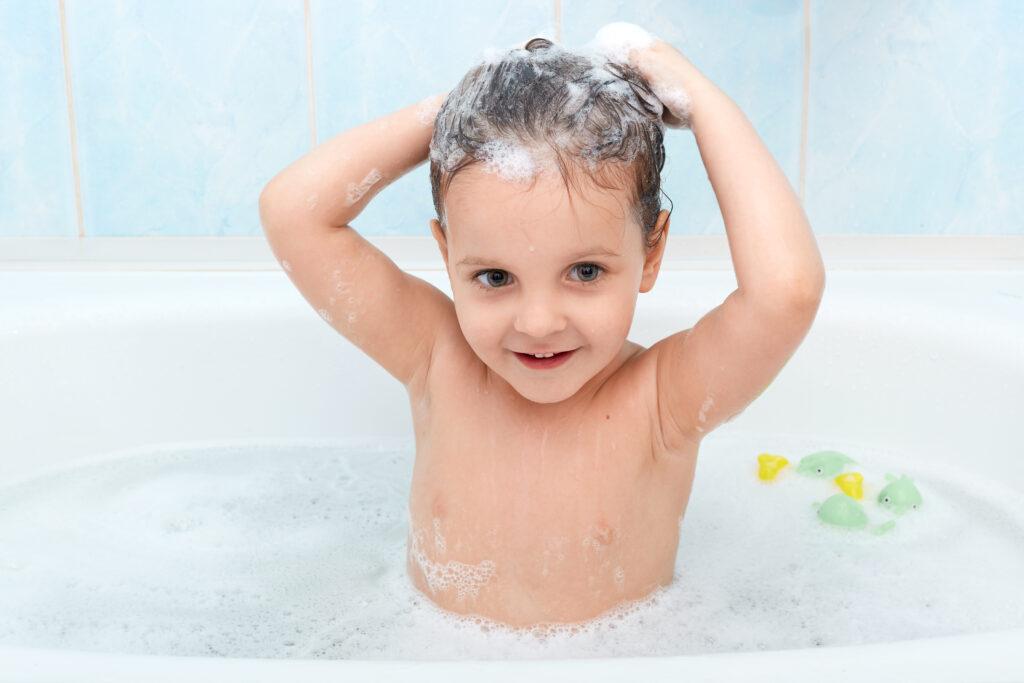
Head lice shampoos are to be used before washing your hair to help kill and remove lice and nits. They may have to be used more than once to kill all of the head lice, so check the box and information leaflet for instructions before use.
For example, Lyclear Shampoo Treatment comes with a head lice comb that should be used with the shampoo, and it is designed to be up to 100% effective in one treatment. To use, Lyclear Shampoo Treatment should be used on dry hair and a thick layer should be applied evenly. Leave it in for 15 minutes, then go through the hair with the comb provided to remove any nits and lice. After all the head lice and eggs have been removed, wash the hair using enough water to make the shampoo foam, then rinse.
5) Spray

When treating head lice, the sprays can come pre-assembled so you just need to apply the product. Often, it should not be sprayed into the eyes, so take care when using it and read the box and information leaflet for instructions.
Hendrin 4% Lotion Spray is skin friendly and is to be used on dry hair. Spray evenly over the hair with approximately a 10cm gap between the head and the spray bottle until the hair and scalp are covered. Spread it evenly between the tips and the roots of the hair using your fingers or a normal comb and allow the hair to dry. This spray should be left in for a minimum of 8 hours, then washed out using regular shampoo. Repeat after 7 days.
6) Solutions
Solutions are another way to treat head lice, and there are a variety of different options you can use to help your child. For example, the Travel Health Clinic have several Full Marks head lice treatments you can use at home. Different solutions work in different ways, so make sure you read the instructions before use to ensure the treatment can work effectively.
Full Marks head lice solution is designed to kill both head lice and their eggs without using traditional pesticides. When using this product, ensure that the entirety of the hair and scalp are covered. One treatment should use approximately one-quarter of the solution in the bottle. Ensure the treatment is left in dry hair for 10 minutes after it is applied before removing the lice and eggs with the comb provided.
The 6 Full Marks solution treatments also come with a comb which is to be used to remove the nits and lice after the treatment has been applied. Whilst a lot of head lice treatments poison the lice, this solution kills them through dehydration. 50ml should be enough to treat a head, but ensure enough is used to properly cover all the hair and scalp. After application, wait 10 minutes, then comb through the hair to remove the dead lice and nits. The solution can then be washed out using normal shampoo, and no conditioner is needed. Make sure you repeat the treatment process 7 and/or 14 days later as required.
7) Head Lice Lotions
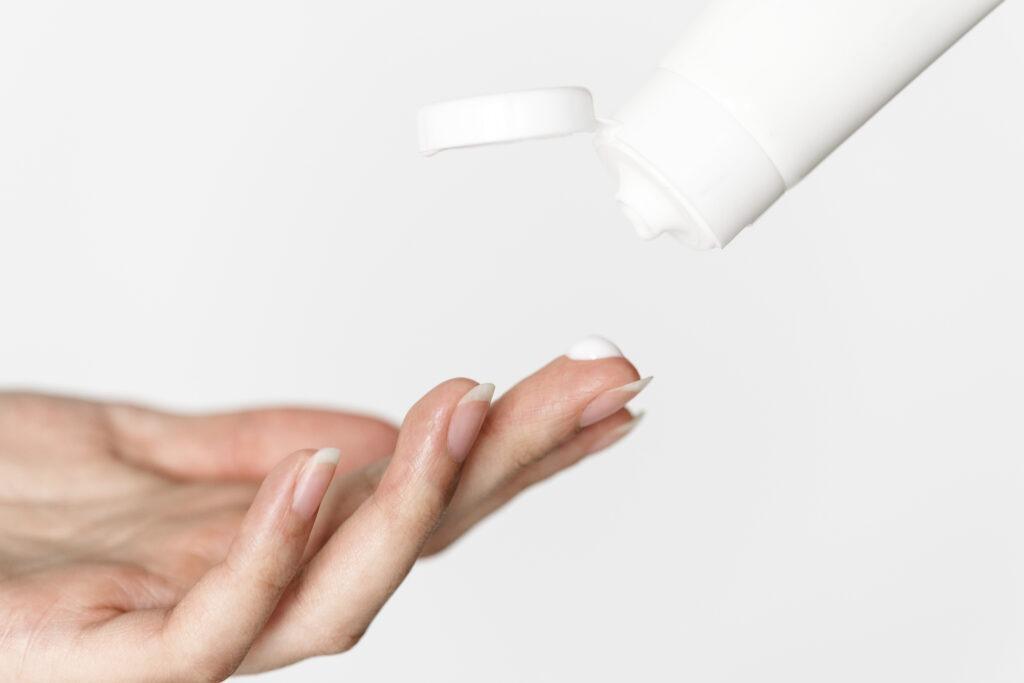 Lotions are another method of head lice treatment, and medicated lotions may be suggested to you by a pharmacist if your child still has live head lice after using the wet combing method for 17 days.
Lotions are another method of head lice treatment, and medicated lotions may be suggested to you by a pharmacist if your child still has live head lice after using the wet combing method for 17 days.
For example, Lyclear Sensitive Lotion is designed to treat head lice whilst also being gentle to the skin. It should be used on dry hair, with plenty of the lotion being applied to cover the entire hair and scalp. Ensure it is applied behind the ears and at the nape of the neck. Massage it into the scalp and hair, and leave for 8 hours. This can be used as an overnight treatment. Wash the solution out using a regular shampoo, then remove the nits and dead lice with a head lice comb.
It is important to treat any head lice your child may have and to check with other members of the family if your child has them. However, do not give your child head lice treatment if it is not necessary. It is also worth mentioning that head lice cannot be prevented, they can only be treated.
The Travel Health Clinic have a range of head lice treatments for your child, as well as other child-friendly products and medications. For example, our children’s pain relief can help with a range of aches and pains, and some can be used to treat other issues such as cold and flu symptoms. Whether your child is suffering from headaches, fever or sore throats, we have the medications to soothe their pain so they can return to normal. Take a look and see how we can help with your child’s symptoms today.


